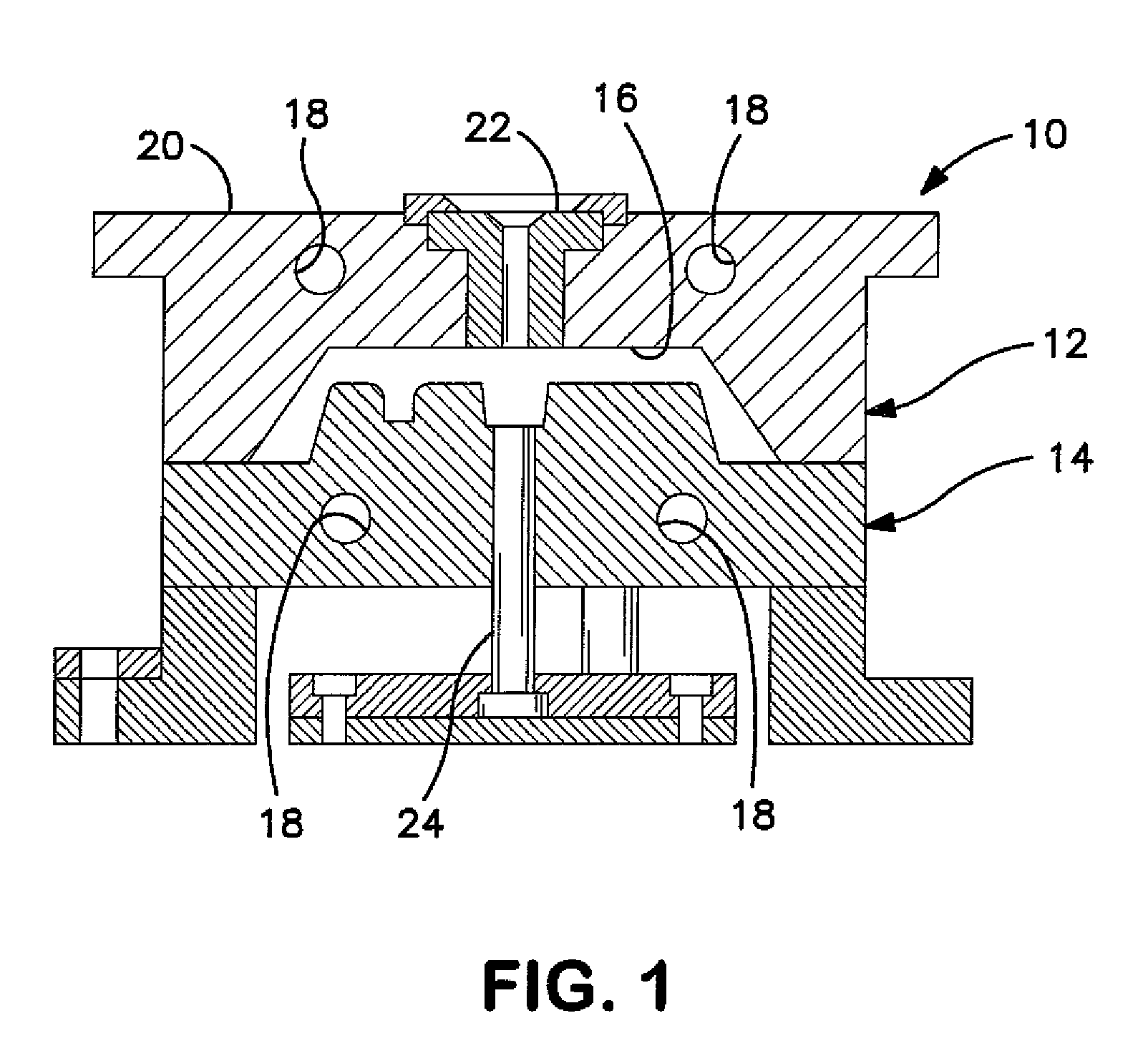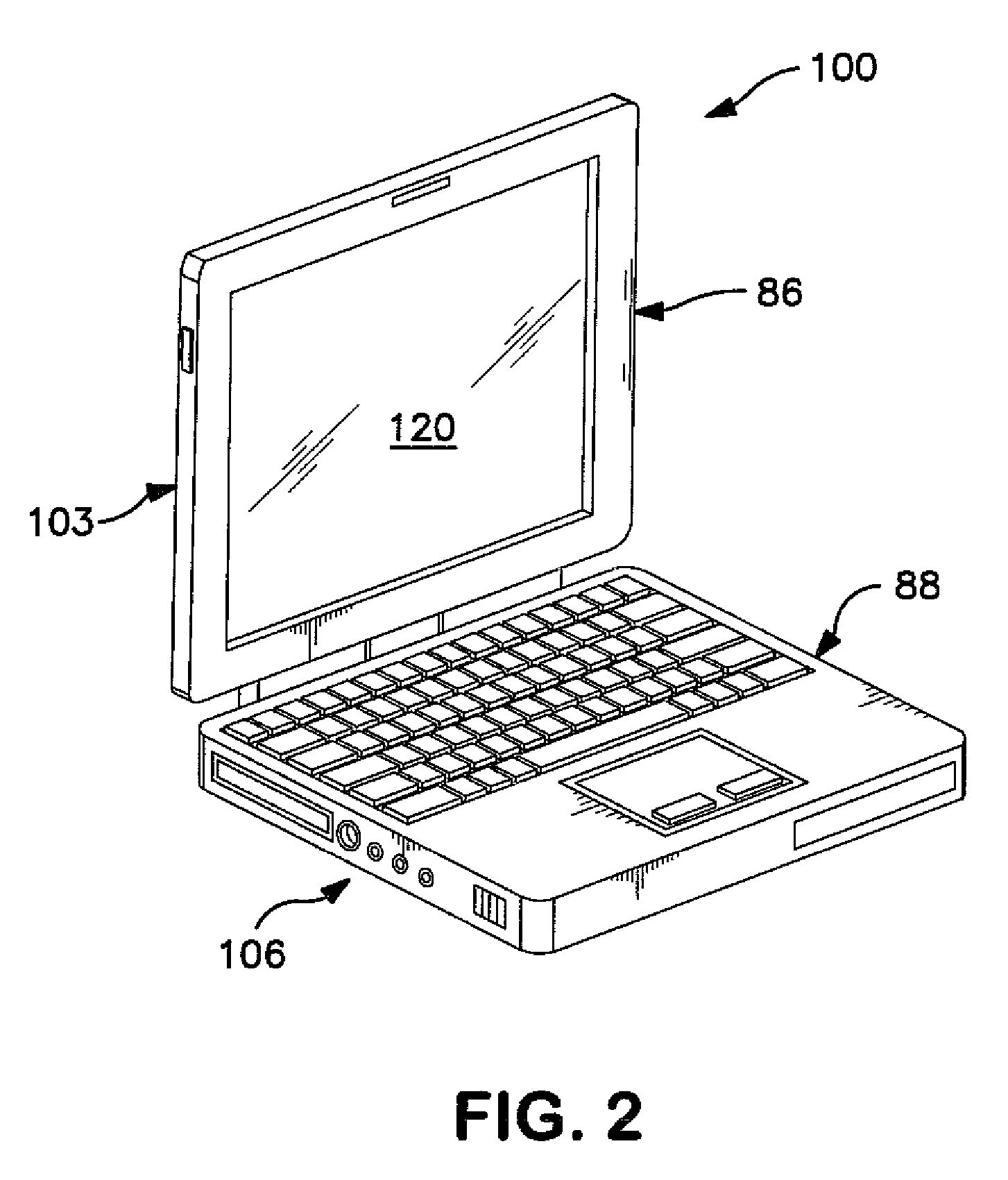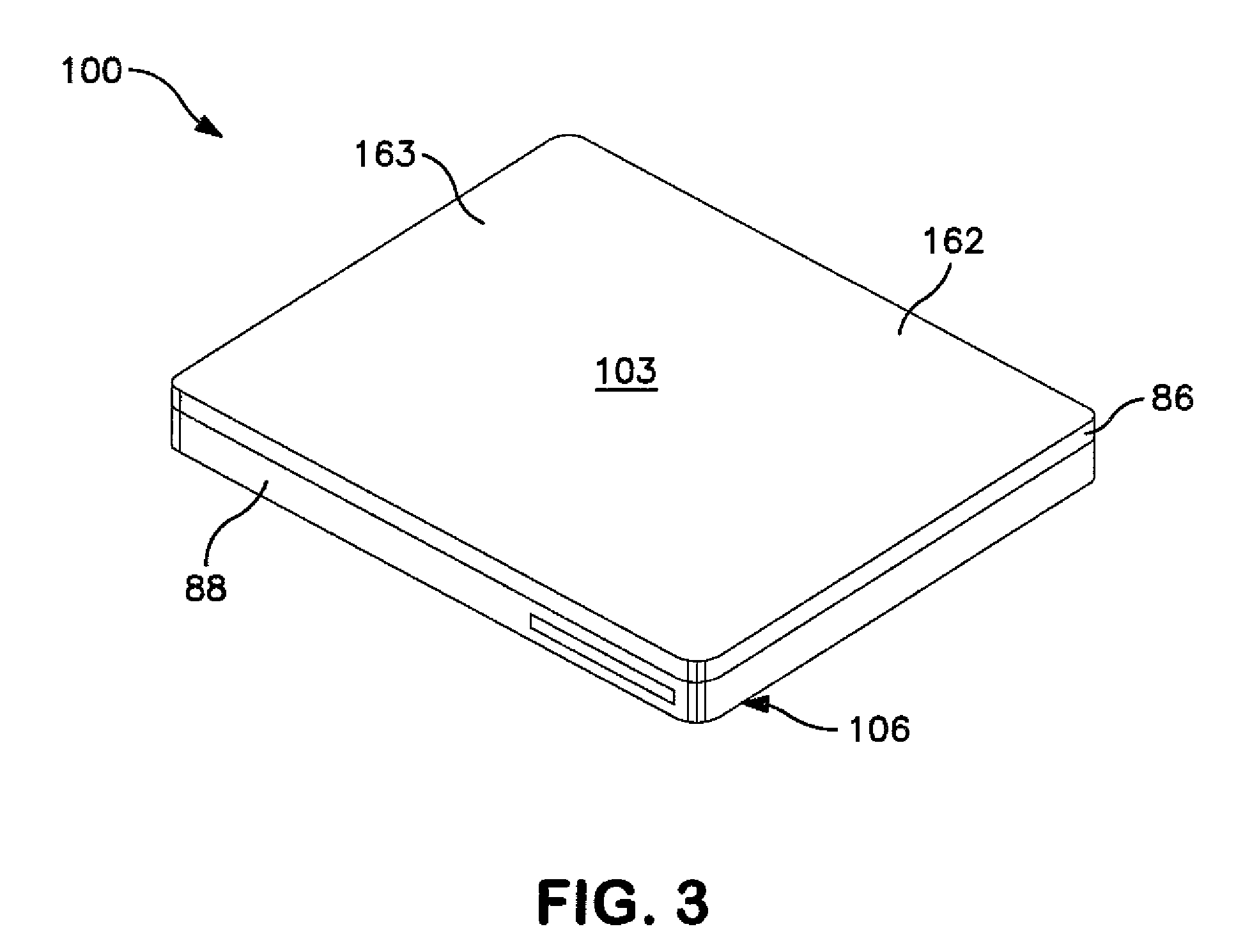Housing for a portable electronic device
a portable electronic device and housing technology, applied in the field of housing for portable electronic devices, can solve the problems of high melt viscosity, difficult to detect, and contain a residual amount of chlorin
- Summary
- Abstract
- Description
- Claims
- Application Information
AI Technical Summary
Benefits of technology
Problems solved by technology
Method used
Image
Examples
example 1
[0085]The components listed in Table 1 below are mixed in a Werner Pfleiderer ZSK 25 co-rotating intermeshing twin-screw extruder with a 25 mm diameter.
[0086]
TABLE 1Sample No.123456Glycolube ® P 0.3% 0.3% 0.3% 0.3% 0.3% 0.3%Diphenyl disulfide—— 0.4% 0.2% 0.2%2,2′-dithiobenzoic ————— 0.2%acidAminosilane— 0.4%— 0.2%— 0.2%Mercaptosilane———— 0.2%—Suzorite mica 30% 30% 30% 30% 30% 30%Glass fibers 20.0%20.0%20.0%20.0%20.0%20.0%(4 mm)Forton ® 0214 49.7%49.3%49.3%49.3%49.3%49.3%(Mn = 17,431, Mw = 62,230)
[0087]The extruded pellets were tested for ash content and viscosity, with results described in Table 2, below.
[0088]
TABLE 2Sample No.123456Ash %49.8650.0049.8149.7148.4448.25Melt viscosity27473587764116013422434(poise)
[0089]The pellets are also injection molded on a Mannesmann Demag D100 NCIII injection molding machine and tested for certain physical characteristics, as described in Table 3 below.
[0090]
TABLE 3Sample No.123456Tensile Modulus (MPa) 162371717616936177401618216542Tensile ...
example 2
[0092]The components listed in Table 4 below are mixed in a Werner Pfleiderer ZSK 25 co-rotating intermeshing twin-screw extruder with a 25 mm diameter.
[0093]
TABLE 4Sample No.78Glycolube ® P0.3%0.3%Diphenyl disulfide—0.2%Aminosilane coupling agent0.4%0.4%Glass fibers (4 mm) 40% 40%Fortron ® 0205 (Mn = 16,155, Mw =59.3% —58,228)Forton ® 0214 (Mn = 17,431, Mw =—59.1% 62,230)
[0094]The extruded pellets were tested for ash content and melt viscosity, with results summarized in Table 5.
[0095]
TABLE 5Sample No.78Ash %40.8140.57Melt viscosity25922537
[0096]The pellets are also injection molded on a Mannesmann Demag D100 NCIII injection molding machine and tested for certain physical characteristics, as described in Table 6 below.
[0097]
TABLE 6Sample No.78Tensile Modulus (MPa)1573615233Tensile stress (MPa)194199Tensile elongation (%)1.581.90Flexural Modulus 23° C. (MPa)1462514254Flexural Stress (MPa)278285Flexural Strain (%)2.012.21Izod Notched Impact Strength9.89.3(kJ / m2)Chlorine content (ppm)...
example 3
[0099]The components listed in Table 7 below are mixed in a Werner Pfleiderer ZSK 25 co-rotating intermeshing twin-screw extruder with a 25 mm diameter.
[0100]
TABLE 7Sample No.91011Glycolube ® P0.3%0.3%0.3%2,2′-dithiobenzoic acid—0.3%—Diphenyl disulfide——0.3%Lotador ® Ax-8840 EGMA 8% 8% 8%CopolymerGlass fiber 30% 30% 30%Fortron ® 0202 (Mn = 16,090, Mw =61.7% ——35,870)Forton ® 0214 (Mn = 17,431, Mw =—61.4% 61.4% 62,230)Total100% 100% 100%
[0101]The extruded pellets were tested for ash content and melt viscosity, with the results summarized in Table 8.
[0102]
TABLE 8Sample No.91011Ash %30.3430.2130.31Melt viscosity109427462228
[0103]The pellets are also injection molded on a Mannesmann Demag D100 NCIII injection molding machine and tested for certain physical characteristics, as described in Table 9 below.
[0104]
TABLE 9Characteristic009010011Tensile Modulus (MPa)980095509463Tensile stress (MPa)137.00137.00124.00Tensile elongation (%)1.902.281.80Flexural Modulus 23° C. (MPa)90008857.0090...
PUM
| Property | Measurement | Unit |
|---|---|---|
| temperature | aaaaa | aaaaa |
| melt viscosity | aaaaa | aaaaa |
| melt viscosity | aaaaa | aaaaa |
Abstract
Description
Claims
Application Information
 Login to View More
Login to View More - R&D
- Intellectual Property
- Life Sciences
- Materials
- Tech Scout
- Unparalleled Data Quality
- Higher Quality Content
- 60% Fewer Hallucinations
Browse by: Latest US Patents, China's latest patents, Technical Efficacy Thesaurus, Application Domain, Technology Topic, Popular Technical Reports.
© 2025 PatSnap. All rights reserved.Legal|Privacy policy|Modern Slavery Act Transparency Statement|Sitemap|About US| Contact US: help@patsnap.com



